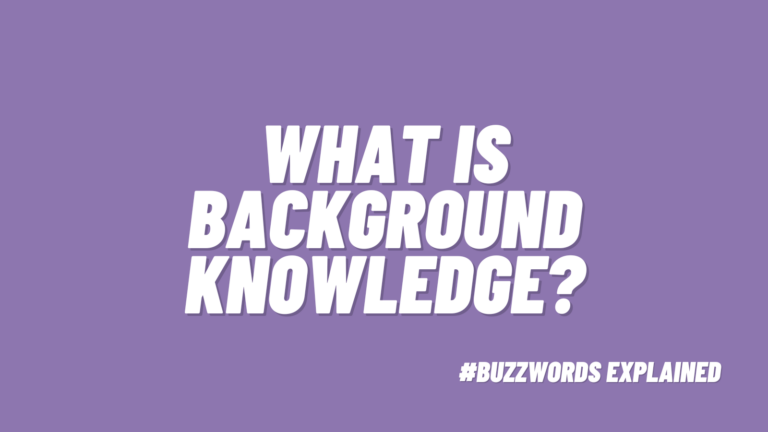I’m going to be honest with you. Talking to middle-school students about the risks of drugs and alcohol is not my favorite thing to do. It’s awkward. It’s challenging. I don’t know what they’re going to say. Frankly, it scares me a little. But here’s the thing. Not talking to my students about underage use and abuse of drugs and alcohol, and the many tough decisions they’re going to face as teenagers, scares me far more. Here’s why. The average age boys first try alcohol is 11. For girls, the age is 13. Research shows that teens who drink or use drugs regularly are 65 percent more likely to become addicted than those who hold off until age 21.
So, that’s why I talk to my students. I’m in. Even though it’s hard, even though they sometimes roll their eyes, I talk to them about drugs and alcohol because it matters, because it can help them make good choices, it can help to save lives, and because I believe teachers can make a difference. Genuine, ongoing conversations with adults who care—parents of course, but teachers too—can help teens make better decisions on the way to growing up.
Download these free conversation starter cards I use with my eighth graders. Over the last couple of years, I’ve tried different approaches. Sometimes, I have kids pull a question out of a hat, and we have a class-wide discussion. Other times, I divide a class into groups and give each group a question to chat about. Then, each group reports back to the whole class on their discussion. Below are my most successful “conversation starters” about teen drug and alcohol use, and some tips on how to guide the discussions that follow.
1. Have you been in situations where there were opportunities for drug or alcohol use? Did you feel pressured? Why or why not?
Let students share a few stories. Then guide them to think about peer (or other) pressure. Would they judge someone who says “no” to alcohol and drugs negatively? They will likely say they respect others’ choices, yet they still fear being judged themselves. This dichotomy is a great place to focus the conversation. Ask: “What are your options if you feel pressured?” For example, students can practice what they are going to say so that they feel more comfortable. Suggest they avoid the “pressure zone” or situations that might be uncomfortable. Use the buddy system. Perhaps they can find a friend who shares their values, and they can back each other up.
2. Why do you think some teens abuse drugs and alcohol? If you asked them, what reasons would they give for using? What other reasons might they have?
Some of the answers you can expect are: peer pressure, escapism, “because it’s fun,” curiosity, or rebellion. Push students to also consider reasons like self-medication, boredom, ignorance of the risks, fear of rejection, depression, recklessness. Ask: “What else can you do for fun or when you need an escape? Everybody needs that sometimes. What are some options besides drugs and alcohol?” (Hint: amusement parks, sports, trying something new like acting or skating.)
3. Imagine that it’s 25 years from now and you have a teenage son or daughter exactly the same age as you are now. What would you say to him or her about drinking and drugs?
You may receive a surprising range of answers to this question, but it will likely provoke an interesting discussion. Ask them to consider the choices about drugs and alcohol they would want a younger sibling or cousin to make. Are they different from the choices they make themselves or they intend to make themselves? Push your students to account for the difference. If they want the best for others, why not for themselves?
4. When you feel down, stressed, lonely or bored, what do you do to feel better? Sometimes people “medicate” with drugs or alcohol to avoid difficult feelings. What are some healthier options?
Your students should be able to come up with a list—everything from “Facetime a friend” to “go out for ice cream.” Afterwards, type up their list of suggestions to share as a handout at the next class.
5. It’s Friday night and you’ve been looking forward to hanging out with your friends all week. Your friend says he’ll give you a ride because he knows you’re stuck. You get there and it’s going great, but then you turn around and your ride is smoking a joint. What are your options? What would you do?
Your students will know that calling their parents is the accepted answer. If they don’t want to do that, what other options are there? Find a different ride, Uber, call a sibling or another adult they trust, walk home, spend the night. Talk to your students about the importance of thinking ahead and anticipating possible outcomes. What can they do to avoid these kinds of situations in the first place?
6. You are at a concert and someone offers you a pill to “enhance the experience.” If you were to take it, what are some of the possible consequences? If you chose not to take it, what would happen?
Encourage your class to list all the possible things that could happen after each choice. Appoint a student to record answers on the board. No doubt, one list will be far longer than the other. There are many negative consequences to taking a drug that they know nothing about. Talk to your students about impulse control and the teenage brain. The teen brain is primed to take risks This means that teens need to be extra aware as they make decisions.
7. Have you ever seen anyone using alcohol or drugs make a fool of themselves? What happened? How would you feel if it were you?
Every hand in the room will go up, and everyone will want to tell a story about the time their uncle fell off the porch into the baby pool. The tricky part here is reining it in, and helping them understand that it’s a lot less funny when the Snapchat video stars your own humiliation. Ask students: How would you feel if that was you? How can you avoid making decisions you regret the next day or perhaps even forever?
8. When do you think people are old enough to make their own decisions about drinking and drugs? Do grownups always make good decisions? If you were in charge of setting the legal age, what would it be?
Ask: Are there other reasons why it’s a good idea for teens to wait until they are 21 before they drink alcohol? What are they? For example, research shows that people who use drugs or alcohol regularly as teens are 68 percent more likely to become addicted than those who hold off use until age 21, after which the chances of addiction drop to 2%.
9. What can teens do to have a good time and to feel a rush of excitement other than doing drugs or drinking? In short, what else can teens be doing on a Saturday night?
Push your students to think beyond movies and concerts. How about indoor rock climbing, mountain biking, going to concerts, playing music, learning to cook, volunteering, filmmaking, cartooning, science experiments, political activism, fundraising, bodybuilding or camping? Encourage your students to see that they can be themselves, have great friends and a great time without resorting to drinking and drugs.
10. Name two things you would like to accomplish by the time you graduate high school. How could drugs and alcohol use get in the way of those goals?
For this question, ask five or so students to share goals, and then have the rest of the class list ways drugs and alcohol could interfere. If the goal is, for example, playing college football, marijuana use could affect physical and mental performance on the field, lower your grades or even get you thrown off the team. Encourage your students to see that the temporary fun of drinking and drugs can come with dangerous risks and unwanted consequences both short- and long-term.

